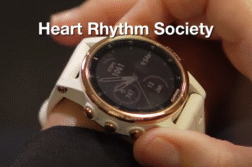Mich. (Ivanhoe Newswire) – Researchers say a means of reducing the risk of death years after heart surgery is being underutilized, and they say more effort is needed to increase participation. Cardiac rehab
You could say Sheryl Duda is a model patient – she has diligently attended more than 36 cardiac rehab sessions since having quadruple bypass surgery after a sudden heart attack.
“I was in intensive care, in SICU for six weeks. I was very weak; I was very tired. They didn’t think I was gonna make it,” Sheryl recalls.
She credits rehab with saving her life, and a four-year research study by Michigan Medicine backs that up. Sheryl is representative of the 8,000 participants. The study found that patients who attended cardiac rehab after bypass surgery improved their survival rate by five to six percent. Those attending more sessions had greater survival benefits. Sheryl did the recommended 36.
“The more sessions you attended, the greater the benefit – at least in terms of, kind of, long-term survival,” explains Professor of Cardiac Surgery at Michigan Medicine, Michael Thompson, MD.
Despite the benefits, Sheryl is the exception, not the rule. Only 12 percent of the patients in the study completed all 36 sessions.
Sheryl tells Ivanhoe, “It was very hard in the beginning. It kept getting easier and easier as I went on, but in the beginning, it was very difficult because I was in a wheelchair; I couldn’t walk.”
Sheryl was fortunate that her partner Mark brought her to every session. She says he is her motivation to keep going.
The study also found that vulnerable populations have lower rates of attendance, which affects them benefiting from the treatment. Researchers say more efforts are needed to close the gap between referrals and participation.
Contributors to this news report include: Hillary Rubin, Producer; Zach Lang, Videographer; Roque Correa, Editor.
To receive a free weekly e-mail on medical breakthroughs from Ivanhoe, sign up at: http://www.ivanhoe.com/ftk
MEDICAL BREAKTHROUGHS
RESEARCH SUMMARY
TOPIC: CARDIAC REHAB INCREASES BYPASS SURVIVAL
REPORT: MB #5285
BACKGROUND: Cardiac Rehabilitation, also known as cardiac rehab, is a medical program designed to build up an individual’s cardiovascular health after experiencing angioplasty, heart surgery, heart attack, or heart failure. Cardiac rehab is a three-part system consisting of exercise counseling, heart heath education, and stress reduction. The process of cardiac rehab is a collaborative effort and includes the help of nurses, pharmacists, doctors, and family/friends to curate healthy habits and changes. To get started with cardiac rehab, you must confirm with your doctor whether you’ll be eligible. Once eligible, you’ll need to register for a cardiac rehab program. After registration you’ll be assigned a medical team that will help you create goals for your heart health and establish a cardiac rehab plan. To ensure you maximize the most out of cardiac rehab be intentional about reaching your goals and take your medicine in the way it was prescribed.
(Source: https://www.heart.org/en/health-topics/cardiac-rehab/what-is-cardiac-rehabilitation)
DIAGNOSING: Involvement in a cardiac rehab program is advantageous for anyone with a heart condition. When participating in this program, an individual can expect to consume a heart healthy diet, tackle stress management, maintain a healthy weight, suspend the use of tobacco/alcohol, regularly consume prescribed medications, and routinely monitor blood sugar, blood pressure, and cholesterol levels. Studies have shown that patients active in cardiac rehab reduced their risk of heart attack by 30%, their risk of stroke by 30%, their risk of cardiovascular death by 58%, and their risk of depression symptoms by 63%. Studies have also reported that completing a cardiac rehab program can add five years to your life expectancy. Through repetition and consistency, individuals can recover stronger after a heart issue. It also helps with chest pain, shortness of breath, and anxiety that can surface after having a heart attack.
(Source: https://my.clevelandclinic.org/health/treatments/22069-cardiac-rehab)
NEW TECHNOLOGY: Studies have shown that remote digital cardiac rehabilitation is the same as traditional cardiac rehabilitation in relation to acquiring functional improvement, controlling risk factors, and elevating the patient’s wellbeing. There also were no noticeable differences in the number of hospitalizations nor mortality rates. Unfortunately, only 20-30% of individuals eligible for a cardiac rehab program choose to enroll in one. However, it’s been found that digital cardiac rehab has a lower patient dropout rate, and a higher level of responsiveness and determination in the at home groups versus the traditional in hospital rehabilitation groups. Based on the Accenture consumer survey on patient engagement, roughly 38% of people aged 65-74 use technology to monitor their health compared to the mere 22% aged 18-34 who use it.
(Sources: https://my.clevelandclinic.org/health/treatments/22069-cardiac-rehab
https://www.liebertpub.com/doi/10.1089/tmj.2018.0302)
FOR MORE INFORMATION ON THIS REPORT, PLEASE CONTACT:
Noah Fromson
If this story or any other Ivanhoe story has impacted your life or prompted you or someone you know to seek or change treatments, please let us know by contacting Marjorie Bekaert Thomas at mthomas@ivanhoe.com




